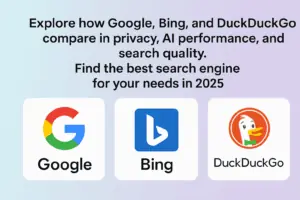In content creation, it’s all about knowing and being able to research your target audience. Our clients each have a demographic that our content must appeal to. Whether it be the tone of voice in social media posts or the design of the website, the target audience is always at the forefront of our minds.
Ultimately, your ability to understand your target audience is how you capture attention, maintain interest, and create revenue.
Identifying and targeting a specific target audience is one of the most crucial steps in the marketing process, so understanding exactly how to attract and engage them should be a top priority.
What is a Target Audience?
A target audience is who your content is created for. When considering who exactly these groups of people are, you should consider factors such as demographics, and who your content is going to have the most impact on. Having a clear vision of the target audience is something that needs to happen before any type of content is created or promoted.
There should be three key elements that define a target audience:
1. Geographic Information
If you are a local business, the first stepping stone is attracting local clients. Potential customers could be just around the corner, so appealing to their locality can work in your favour. If your target geographic is much wider, the two following elements may be more specific.
2. Demographic Information
These are the quantifiable characteristics that define your ideal customer. This would include:
- Age
- Gender
- Income
- Education
- Marital Status
- Family Size
- Race
- Religion
- Ethnicity
- First language
- Profession
3. Psychographic Information
Psychographic information is much more ambiguous than the previous two elements.
It refers to your audience’s personality types and lifestyles. This is where you really begin to explore exactly the kind of person you want to attract. You could pay particular attention to their buying habits, interests, hobbies, behaviours, and so on. Understand an audience’s psychographics can allow you to create more personalized content. and can influence exactly how they engage and interact with your brand.
Audience Targeting
One of the biggest mistakes you can make when developing your marketing strategy is assuming that you can target everyone. It is only in very rare instances that this can be pulled off (for example, Google and Apple).
For us, we know that we are specifically targeting businesses of all sizes, and we need to appeal to their desire to build up their brand and drive more traffic to their sites. We know that our tone of voice and blog posts need to represent this, and our website needs to be professional in order to let our clients know that we are the best choice for them.
A great way to start a target audience analysis is by understanding the “Hierarchy of Needs.”
A target audience with little-to-no background in content writing and social media will want written copy that is straight to the point, easy to understand, and establishes their brand.
At the top would be those high-level digital execs who are looking for the nitty-gritty details on SEO, analytics and social media reach.
So, if this target audience example is high-level executives in the digital space, the content you create would need to reflect this.
Define Yourself
One of the first things you must do is establish your brand identity and personality. If you aren’t sure of exactly what you want your brand to look and sound like, it can make it difficult to attract an audience.
Here are some of the basics to get you started:
- What do they look and sound like?
- What is MOST important to them?
- What is something they would never do?
- What do they value outside of work?
This can be a long, ongoing process full of trial and error. Also, your identity can change in order to adapt to new and evolving target audiences.
Establish the average consumer
Who Are They?
This information will involve key facts about your audience, such as age, occupation, and location
What Does Their Day-to-Day Look Like?
What do they do during their average day? How do they get to work? What food do they consume? How do they watch TV?
What Are Their Biggest Challenges?
Does something prevent them from achieving their very best?
What Do They Value?
Explain what is most important to them during their product-buying process
What Do They Aspire To?
What are their long and short term goals? You can use this to personalize their experience and benefit their aspirations.
Understand which content best fits your target audience
Once you have created your average consumer, the next part is learning which forms of content they lean towards. Ultimately, content creation and marketing is about meeting your target market in their own field.
It can be easy to create content for yourself instead of your customer, so make sure that you uphold your brand values and tone of voice so that your target audience doesn’t feel ignored.
So, how do you find out exactly what your target audience wants?
You could start by conducting surveys for people that fall into your target demographic, and discover exactly what content you need to be providing. It’s also incredibly helpful to find out what social media platforms your audience prefers so you can deliver the correct content. For example, if a customer tends to browse Facebook regularly, creating visual content such as images and videos can improve their engagement and interest in your brand.
Also, Google tends to place the most popular search results of a given term right at the top of the page. The top piece of content tends to include a number of keywords that appeal directly to what the consumer wants. Take some time to research exactly what your top competitors are doing. What words are they using? What are their main focus points?
When creating great content, it’s all about the audience. Gaining an all-round knowledge of what they expect and what they want from you enables you to develop successful marketing campaigns which you can implement on your website and your social networks.
In the long process of determining exactly who your target audience is and what they prefer, constantly checking their engagement can help you decipher what you’re doing correctly and what you need to improve on.
Monitor the Performance of Your Content
Your target audience’s interests and preferences can change so rapidly, so it’s incredibly important to ensure that your content changes with them. Keep an eye on the analytics of your social media posts and website visits. Has interaction decreased? Are certain posts getting more interaction than others? If so, try to determine what you can do better. Perhaps you could try interacting with users on social media, in order to establish a more personal experience.
As always, ensure that your keywords and SEO are up to scratch so that your website appears higher up on Google’s search options. Your marketing efforts and quality of content is reflected in your brand’s performance, so don’t fall behind.
In Conclusion
Keeping your audience happy and engaged is the most important factor in establishing any successful brand. Ensure that this is always the case by creating content that appeals directly to them. This can be achieved through elements such as your written copy, web design, and tone of voice. If you always have your audience at the forefront of your mind when creating content, you can’t really go wrong.
If you would like to improve your target audience marketing campaign, get in touch with our team today. We are a Doncaster based marketing agency who provides marketing services across the UK at bespoke prices.










